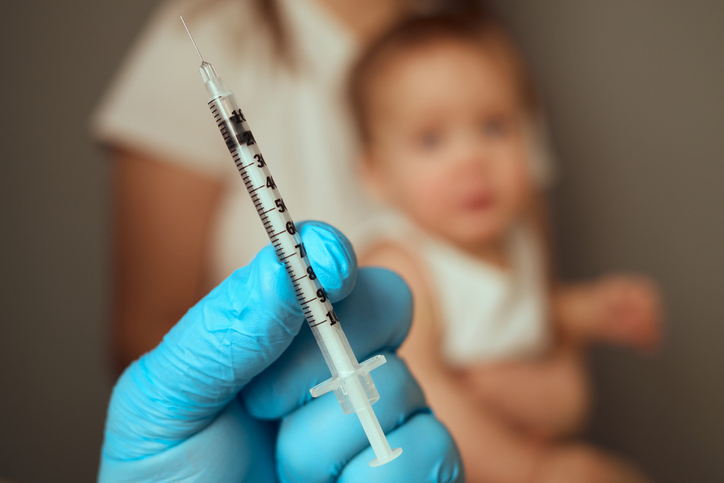A David and Goliath battle has arisen in Minnesota over ownership and use of patients’ genetic data. On one side of the heated debate is Gov. Tim Pawlenty (R) and two of Minnesota’s major research institutions, the Mayo Clinic and University of Minnesota. On the other side is a group of determined citizen organizations.
The issue has become so contentious that leading advocates won’t talk about it with the general public.
A public forum to be held by the Citizens’ Council on Health Care (CCHC) was cancelled when both the Governor’s Office and the Mayo Clinic declined to participate. The February 25 event, “Biotech & Body Parts: The Question Is Patient Consent,” would have featured a national expert on genetics and health policy.
Millions of Dollars Allocated
At issue is the governor’s genomics research initiative. In 2003, the Minnesota legislature provided $2 million and tax relief to the new Minnesota Partnership for Biotechnology and Medical Genomics, created by Mayo and the University.
This year–after 2004 gridlock consigned most of last year’s bills to the recycling bin–the governor’s proposal includes $20 million for a new genetics research facility to be built on top of an existing Mayo building, and $15 million for 2006-2007 to support genetic research conducted at Mayo.
A separate Republican bill proposes even more funding–$15 million per year for five years. The partnership is currently working with the $2 million provided in 2003 and with funds supplied by the National Institutes of Health (NIH), but it will need further funding for the proposed research facility and to push ahead with more genetic research.
Human tissues, serum, and body parts discarded after surgery or autopsies–dating back to 1906–will be used in the research.
State House Held Hearing
Although CCHC was forced to cancel its public forum, it may have had an unexpected, but positive, impact. Rep. Paul Kohls (R-Victoria), chair of the new Technology, Biosciences, and Medical Devices Division of the Minnesota House Commerce Committee, took the unusual step of announcing an informational hearing on the initiative before a bill had even been introduced.
At the “Ethics and Genomics” hearing, held February 10, committee members heard organizations express concerns on such matters as genetic privacy, patient consent, human rights, cloning, and embryonic stem cell research.
“The governor’s plan has been surrounded by what I call a rah-rah atmosphere,” Twila Brase, president of CCHC, told committee members. “A bunch of cheerleaders, a lot of hoopla, and not enough questions.”
Governor Remains Enthusiastic
How the governor will respond now is unclear. His enthusiasm for the initiative is strong.
Pawlenty began his 2005 State of the State address, delivered at the Mayo Clinic, with praise for the plan. “At 1:00 this morning, a dozen huge garage doors behind me flew open and this facility came alive as more than 15,000 blood and tissue samples began arriving from across the country and around the world,” Pawlenty said. “They’re unloaded, processed, and prepared for analysis–before noon!”
Pawlenty then issued an ultimatum. “I want to be perfectly clear on this point: I won’t sign a bonding bill this year without this project in it.”
Once rivals, Mayo and the University of Minnesota joined forces in 2003 at the governor’s insistence. Genetic research will be conducted using Mayo’s medical record database and tissue repository and the University’s supercomputer center. More than 4 million patient medical records are already in Mayo’s database.
Public Concerned for Privacy
The next step in the project will be for researchers to create genetic profiles from DNA in the tissue samples. As Piet de Groen, M.D., director of Mayo’s medical record warehousing project, told the Wall Street Journal in 2002, “We are basically planning for the ability to have everyone’s complete genome in there.”
Brase cited a Gallup poll conducted in 2000 that found 93 percent of those surveyed said medical and government researchers should not be allowed to study an individual’s genetic information without first obtaining his or her consent. Sixty-seven percent of respondents opposed researchers seeing medical records without the patient’s permission.
Brase also quoted from an article in the August 2001 New England Journal of Medicine by George J. Annas, J.D., M.P.H. “Once physicians or researchers have obtained a DNA sample from a person, they can perform an innumerable number of new DNA tests on the sample without ever needing to see the person or obtain another sample,” Annas wrote.
“Thus, extensive personal information can be obtained without the person’s knowledge or consent. Information gleaned from DNA testing is uniquely private because it can be used to predict (not determine) a person’s medical status in the future.”
Patients’ Consent Not Obtained
Ellen Wright Clayton, M.D., J.D., a genetics and health policy expert who was to have addressed the proposed CCHC forum, planned to discuss the changes brought about by an August 10, 2004 guidance issued by the U.S. Office of Human Research Protections (OHRP).
The guidance states researchers can use coded (identifiable, but not identified) tissues as long as they were collected for another purpose (not the particular research proposed) and are not “readily” identifiable.
Clayton noted, however, in the Journal of the American Medical Association in 1995, “When samples are obtained as part of medical care, patients may not be told about the possibility that these samples will be stored and used for [genetic] research.”
New Guidelines Much Looser
Brase noted that she recently spoke to a representative of the OHRP about the 2004 changes regarding genomic testing. The compliance officer told her the guidance is “liberating” for researchers.
“It’s a significant change,” noted Brase. “It means that your tissues can be used for all sorts of projects you might object to. Not only DNA profiling of individuals–who can be identified after death–but cloning as well.”
People from every corner of the world have traveled to Mayo for care and thus have a piece of their genetic code stored in Mayo’s tissue repository.
The state’s legislative session ends on May 24.
Susan Konig ([email protected]) is managing editor of Health Care News.



